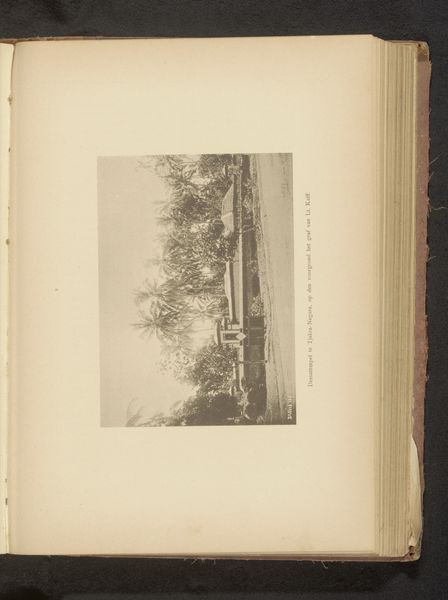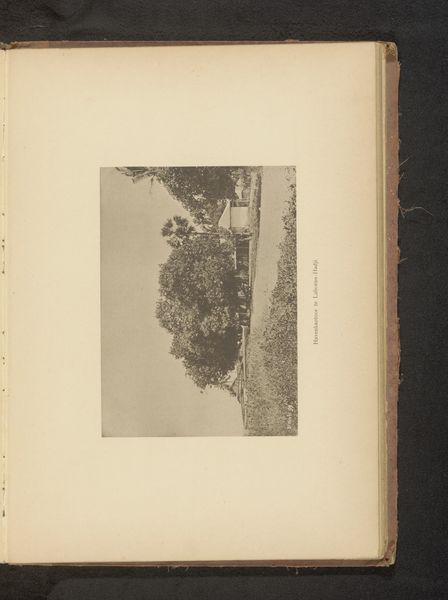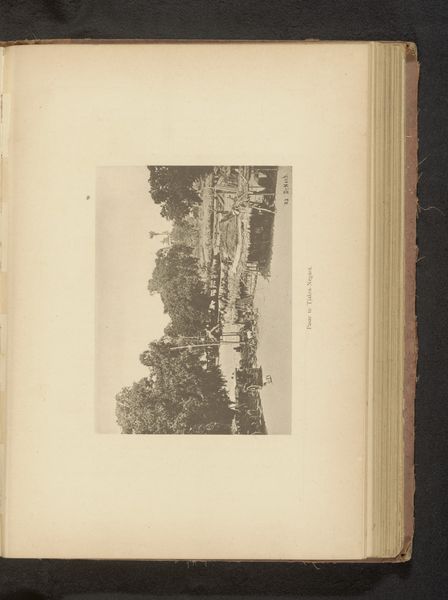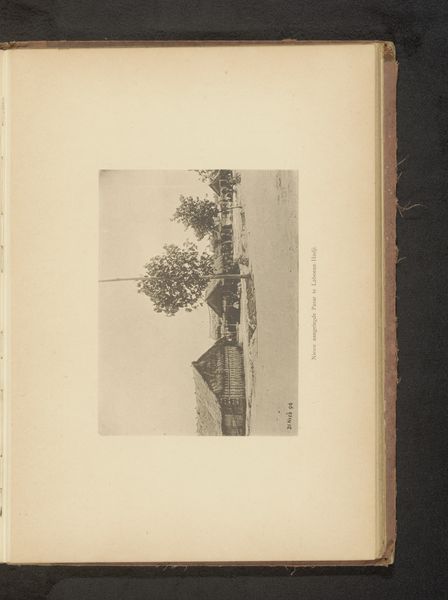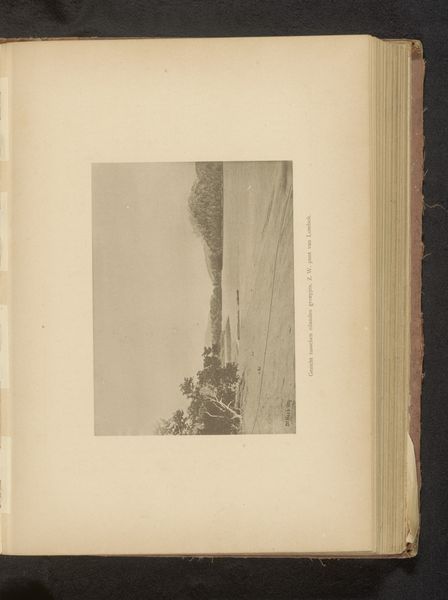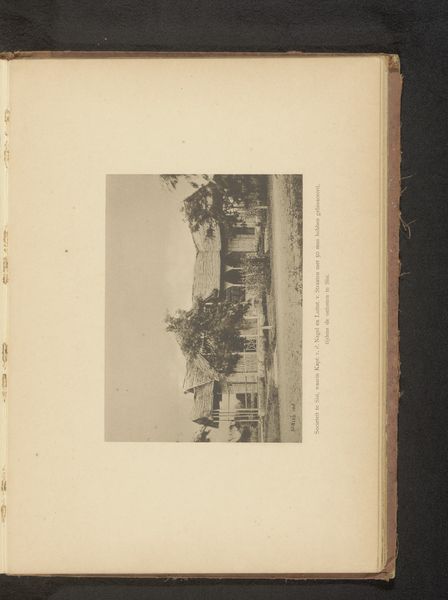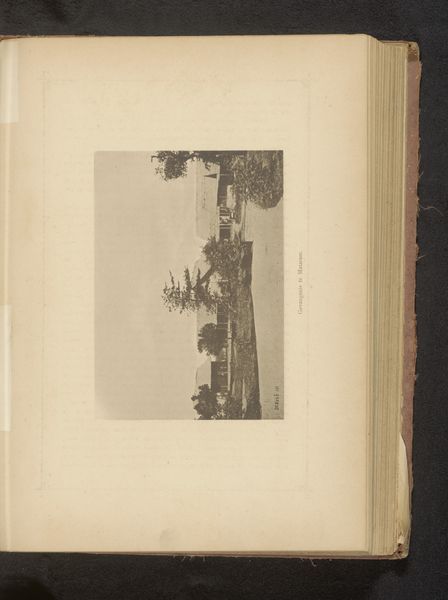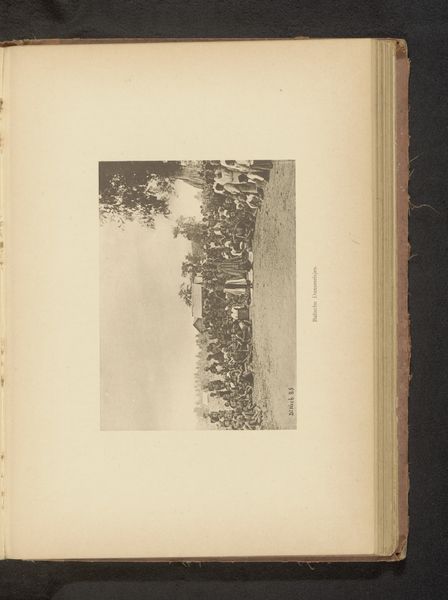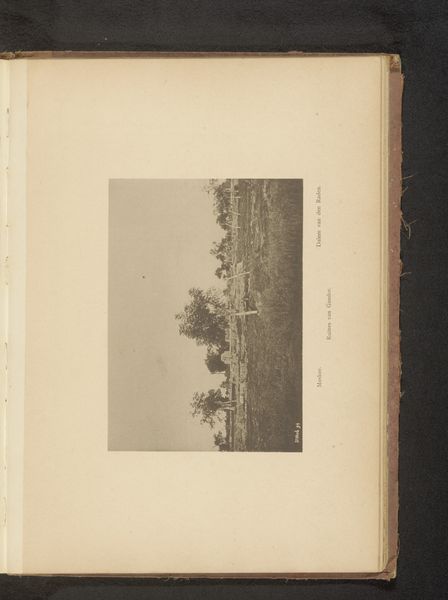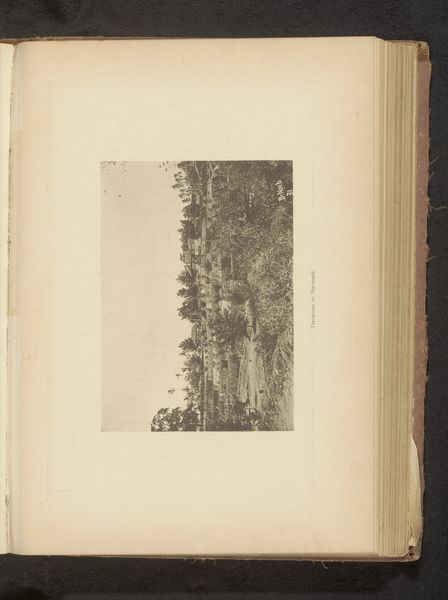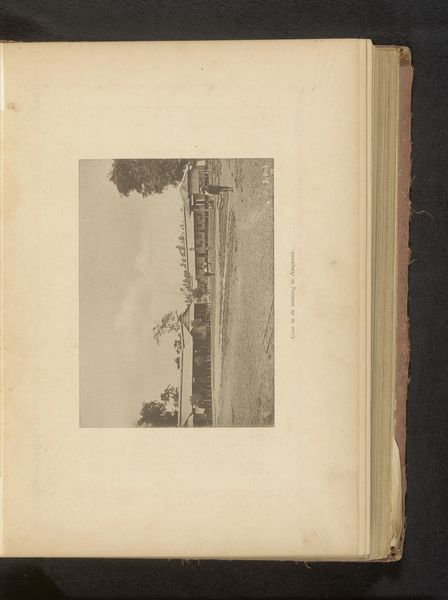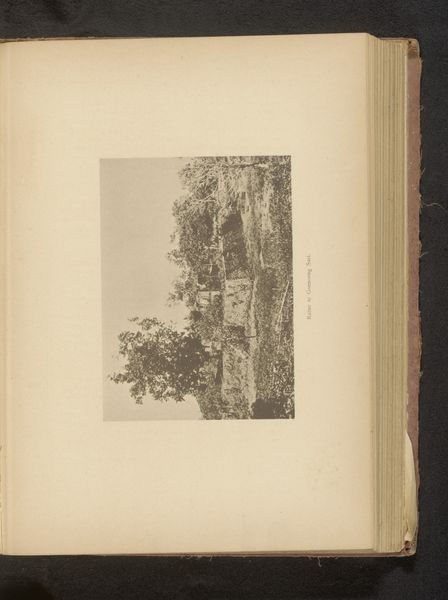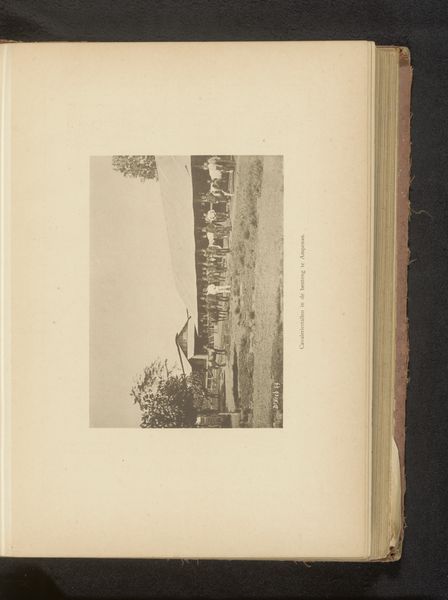
print, photography
#
african-art
# print
#
landscape
#
photography
#
orientalism
Dimensions: height 119 mm, width 165 mm
Copyright: Rijks Museum: Open Domain
Curator: This is a fascinating photograph entitled "Gezicht op een mesigit," or "View of a Mosque," created by Christiaan Johan Neeb before 1897. Editor: It has a subdued, almost dreamlike quality. The monochromatic tones lend an air of tranquility, while the slight blur softens the architectural edges. Curator: Precisely! I'm drawn to how Neeb, using the then-emerging technology of photography, captured this landscape. Considering its likely role within colonial documentation, it makes me wonder about the means and context of its production: Was it a personal artistic endeavor or a commissioned piece reflecting colonial power? Editor: Absolutely. This work needs to be understood through the lens of Orientalism and colonialism. The perspective seems carefully chosen, maybe even romanticized, potentially perpetuating existing power imbalances through visual representation. I wonder about the indigenous perspectives missing from this photographic narrative. Who were the builders of that mosque? And how did colonial practices affect their livelihoods, beliefs, and communities? Curator: Indeed. The very choice of the word 'landscape', applied here in this photographic medium, is significant. Were the photographer and printers considering this a high art piece, or did they envision a wide market for exotic "views"? Was it displayed in galleries or dispersed through books and postcards for colonial consumption? What paper types and processing techniques did he employ to create such tones? Editor: The soft focus aesthetic actually creates a palatable image for Western consumption. We also have to consider the ethics of such a depiction. This artwork presents the "Orient" to Western eyes. How does it feed into the racial, religious, and political assumptions of its intended audiences? What effects could images like this have when disseminated back in Europe? Curator: Reflecting on Neeb’s “View of a Mosque”, I see a rich blend of early photographic technology used to manufacture colonial consumption— raising essential questions about labor and the era’s means of visual documentation. Editor: Ultimately, artworks like these encourage us to confront the problematic ways cultures have been visualized and how photography contributes to the on-going project of decolonizing representation.
Comments
No comments
Be the first to comment and join the conversation on the ultimate creative platform.
